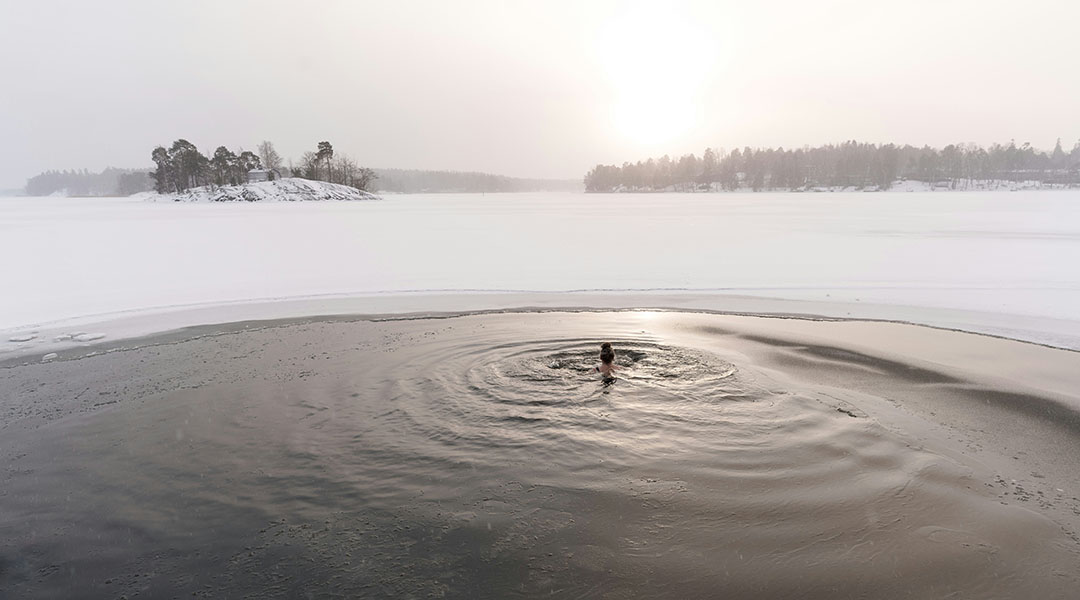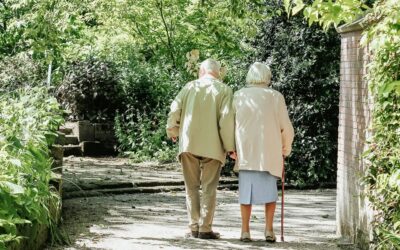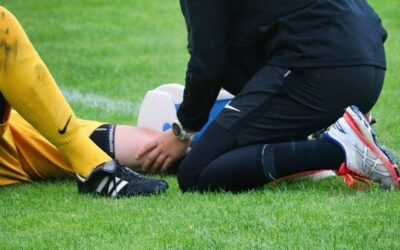Despite the growing interest in cold water therapy for recovery, performance enhancement, and overall health benefits, little research is available on the impact of cold stress on the human body.
While various physiological changes are known to occur as cold tolerance improves, its impact at the cellular level is little understood, with no previous studies conducted in humans.
Researchers at Ottawa University explored whether a week of cold-water exposure could enhance the body’s cellular defenses, evaluating how exposure to cold water affected cellular mechanisms involved in tolerance and acclimation to the extreme temperatures.
“We’re not only composed of organs, but we’re also composed of cells, and so by looking into what’s happening inside the cell, we’re able to essentially get an idea of how the whole body is essentially communicating to itself, as well as the general health status during that stimulus,” said Kelli King, post-doctoral fellow at the University of Ottawa and first author on the paper. “If your cells are not doing well, your body’s not going to be doing well.”
What happens to our cells in the cold?
When cold acclimation becomes impossible, with the body struggling to sustain its core temperature, extensive cellular damage, even cellular death, can occur. However, past animal studies have revealed that protective mechanisms come into play at the cellular level when an organism is exposed to extreme cold to prevent cellular death.
A crucial cellular defense mechanism known as autophagy involves the breakdown of clumps of toxic proteins and other cellular components. These breakdown products are then recycled back into usable molecules, promoting survival.
The King and the research team wanted to see how autophagic responses changed and how they might be used as a measure of growing tolerance to the cold. For the first part of the study, 10 young, healthy, and active males were asked to sit in 14°C water up to their shoulders for an hour for seven consecutive days.
When the internal temperature reached 35.5°C, a degree and a half below normal, the researchers collected blood samples and analyzed them for various indicators of either autophagy or cell death.
They found that levels of a molecule called lactate, an acid produced normally in the body during exercise or in this case, shivering, changed over the course of the study period.
Blood lactate levels were observed to rise during cold-water immersions on days 1, 4, and 7. However, by day 7, the increase in lactate levels after cold exposure was significantly smaller compared to day 1, showing a clear adaptation to the cold over time.
“Seeing a decrease in the lactate is essentially indicating that they are acclimating,” said King. “We see a decrease in shivering as a proxy in that scenario.”
In addition to lactate, the research team assessed various proteins found within peripheral blood mononuclear cells, which are a type of white blood cell. “[This] cell type [was used] as a proxy for the whole body,” said King. “These cells come into contact with all your organs and all your cells because they’re within the blood.”
Whether autophagy was taking place throughout the body in response to the cold could be detected through changes in specific proteins within these blood cells.
For autophagy to occur, several hundred proteins are recruited into the clean-up crew. The researchers selected two proteins that are critical to the process and could be considered hallmarks of the initiation and continuation of autophagy.
One such indicator was LC3-II, a protein embedded in the membrane of an autophagosome—a bubble-like structure in cells that serves as the starting point for autophagic recycling. Another marker was P62, a protein that helps guide damaged materials to the autophagosome.
A shift in cellular processes over time
Over the course of seven days, the researchers noticed a shift in the cellular processes that were prioritized. Autophagic responses gained traction as apoptosis — or controlled cellular death — took a back seat. This meant that cellular components were more likely to be recycled and reused in lieu of the cell being terminated.
Next, the team tested the effect of extreme cold on cells in the blood, outside the human body. This allowed the researchers to explore the impact of truly hypothermic temperatures, without harm to the subjects.
“For ethical reasons, we can’t be putting people in hypothermic conditions that are potentially harmful,” said King. “And so by using this ex vivo component, we can essentially simulate what could potentially be happening in the human body without actually causing any potential additional risk for my participants.”
For these experiments, the researchers directly exposed peripheral blood mononuclear cells, in blood samples to cold temperatures, including 37°C, 35°C, 33°C, 31°C, or 4°C. Then, they analyzed the levels of various proteins that were indicators of autophagy, and other cellular responses to cold stress. They observed similar cellular responses to this simulated hypothermia.
Gathering more data in future
The scientists say they are currently laying the groundwork for future studies that delve into cold acclimation in more diverse groups of people, both in terms of sex and age. Women and older individuals seemingly experience and respond to cold exposure differently compared to younger men. For instance, when looking at physiological responses alone, women tend to shiver less than men in response to the cold.
King’s early research on autophagy in women shows that estrogen can act as a cellular protective mechanism, possibly even inhibiting the cellular process. As a result of this additional link between estrogen and autophagy, cold tolerance in women may develop in a slightly different manner.
“So, there’s a lot of essentially pre-work that needs to be done that we’re essentially trying to accomplish right now, that prior to when we can start essentially applying our knowledge on this to stimulus such as a cold acclimation,” added King.
In a similar vein, autophagy appears to be stifled in old age, with any sort of temperature-related stress being especially challenging and leading to more cellular damage. In earlier experiments, King found that older men were more vulnerable to the cold and showed limited potential in using autophagy to better acclimate.
In this group of young and healthy men, the researchers found that cold tolerance, measured as changes in autophagic responses and cellular death, improved. By day 7 of acclimation, one participant took 55 minutes to reach the cutoff temperature (35.5°C), compared to 40 minutes on day 1. This slower cooling and reduced shivering suggest the body adapted by conserving heat more efficiently.
Although cold acclimation and improved autophagic responses offer some benefits, extreme cold exposure and the risk of hypothermia remain serious dangers. Much more research is needed to understand how autophagy could aid in cold acclimation as well as how cold exposure could hold latent benefits.
For now, researchers aim to determine whether and how this cellular process can be manipulated for our benefit, with this study serving as an early step. If and how people with poor autophagic regulation, such as the sick or old, requires further research.
Reference: Kelli E. King, et al., The Effect of 7-Day Cold Water Acclimation on Autophagic and Apoptotic Responses in Young Males, Advanced Biology (2024). DOI: 10.1002/adbi.202400111
Feature image credit: Mika Ruusunen on Unsplash














